Special for the Armenian Weekly
Javakhk (called Samstekh-Javakheti by Georgians)—a historically Armenian region in the southern part of the Republic of Georgia—remains a forgotten fabric in our modern day pursuit to help our homeland develop and prosper.
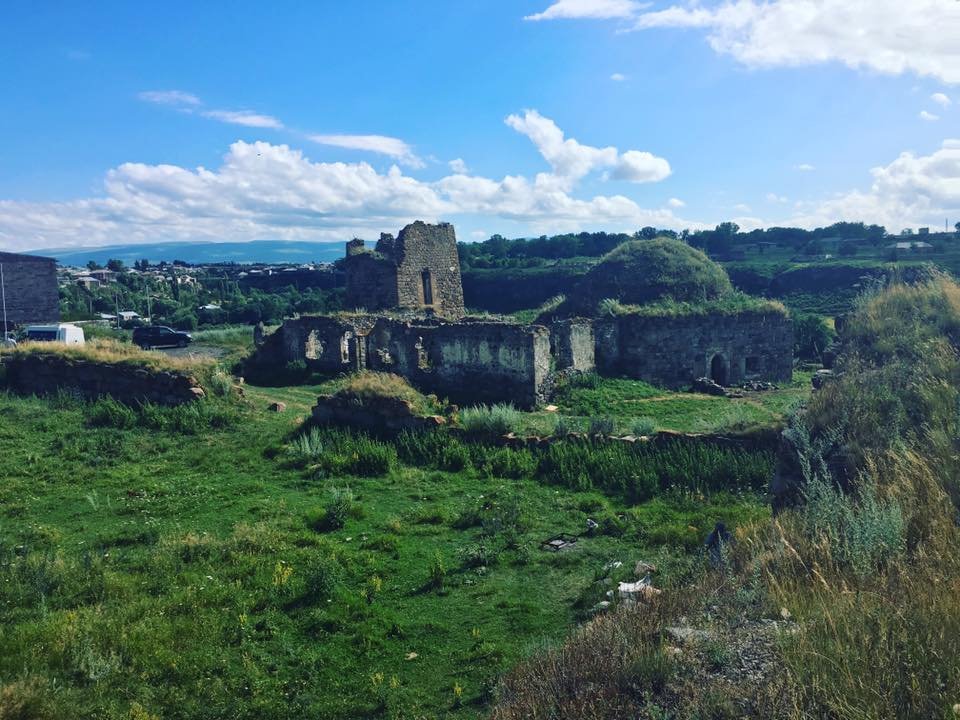
The earliest mention of Javakhk can be found in Urartu sources—in the notes of Armenian King Argishti I of Urartu in 785 BC—called by its former name Zabakha. [1]
In its ancient history, Javakhk remained under the control of the Artashes and Arshakuni Kingdoms as a part of the Gugark province of Greater Armenia until 428. Gugark was the 13th of the 15 provinces of Greater Armenia. Following the collapse of the Arshakuni kingdom, the Georgian state annexed the territories of Gugark which included Javakhk. Regardless of foreign rule, the Armenian Church kept its influence in Georgia. [2]
Over the next couple of hundred years, Javakhk succumbed to Arab invasion but was eventually liberated by the Armenian Bagratids. In the Middle Ages, Javakhk faced invasion by the Seljuks, Mongols, Ottomans, and Persians.
Between 1828 and 1829—during the war between the Ottoman and Russian Empires—the conquest of the districts Akhalkalak and Akhaltskha of Javakhk were significant to the military agenda of each side. As a result of the war, Russia ended up taking possession of the two districts. The Russian occupation proved to be beneficial to those who had fled from these districts, because they were able to return and reconstruct their villages.[3]
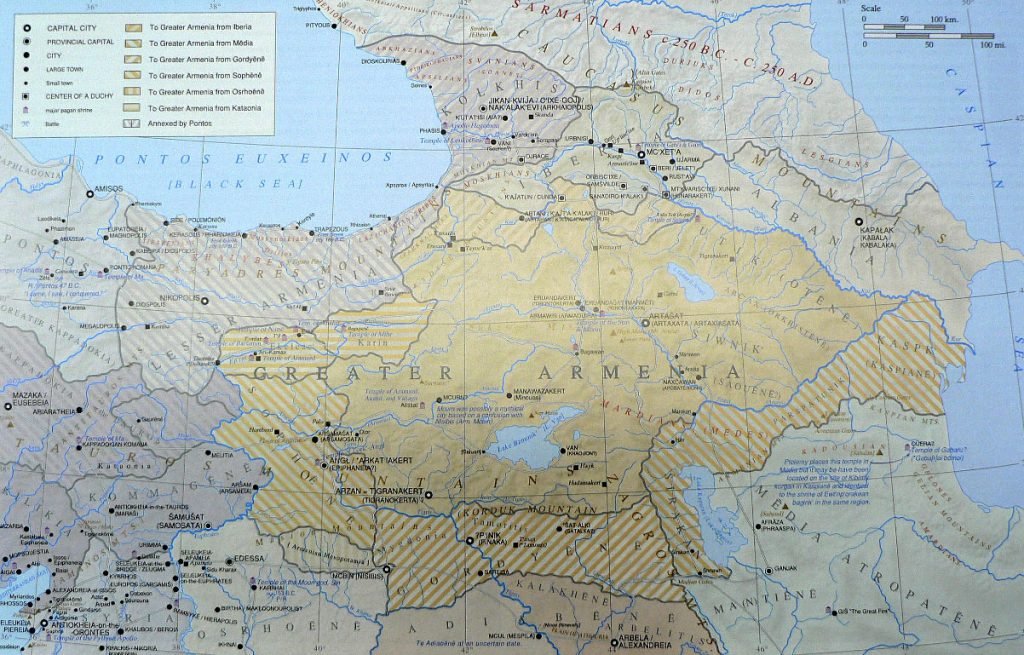
(Source: Armenia map of Strabo’s “Geography”, 180 A. D.. Reconstruction by R. Hewsen, Chicago University Press.)
Armenians took advantage of Russian occupation and, in 1829, 58,000 Armenians from the districts of Ardahan, Erzurum, and Basen left their homes under the leadership of Archbishop Karapet Bagratuni, and took up residents in the districts of Akhaltskha and Akhalkalak.[4] The arrival of the Western Armenians dramatically increased the number of Armenians in Javakhk.
Though historically, Armenians had always lived there, the Armenian population drastically increased in the 1830’s.[5] The Western Armenians imposed a dialect, culture, and traditions on the locals, which eventually contributed to a mixed culture. In addition to the Armenian villages that existed, the Armenians of Erzurum founded over 50 new villages in Javakhk together with the locals. This influx of Armenians that were specifically concentrated in Akhalkalak and Akhaltskha marked a turning point in the Transcaucasian region.[6]

By the 1880’s, Armenians constituted a great majority in Historical Javakhk, specifically in the districts of Akhalkalak, Akhaltskha, and Borchalu. Armenian churches in Javakhk also exceeded 100 during this period.[7] The Catholicos of All Armenians Mkhrtich Khrimian (Khrimian Hayrik) visited the different districts of Javakhk and discussed reforms with Russian officials. Schools and colleges began to open and a literary circle was beginning to form.
Following the Berlin Conference of 1884–85, the Armenian communities of Javakhk felt compassion towards their compatriots in Western Armenia and eventually initiated a movement to administer relief to villages in Western Armenia. In the 1890’s, various liberation groups were established and the Armenian Revolutionary Federation (ARF) and the Social Democrat Hunchakian Party (SDHP) extended their activities to Javakhk. The ARF prioritized national issues and attracted many followers in Javakhk while the SDHP emphasized the issues of land of the peasantry. The relations between Western Armenia and Armenians of Javakhk become increasingly stronger and many young men began forming armed groups to participate in the liberation of Western Armenia.[8]
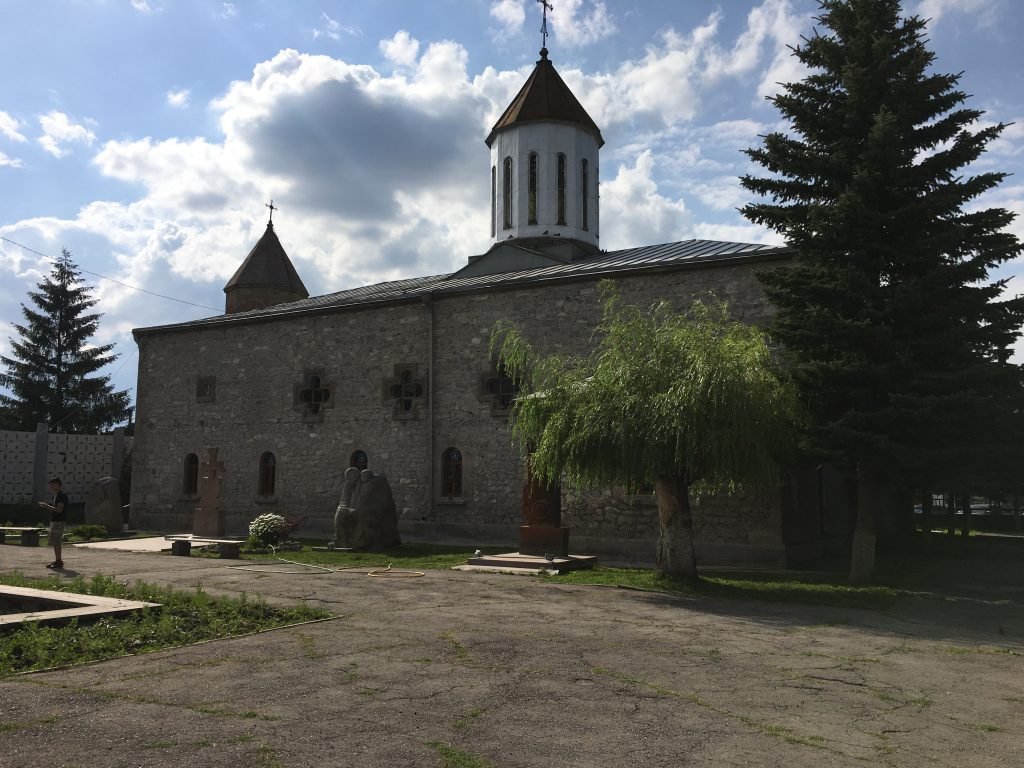
Following the Armenian Genocide, large groups of Western Armenians who fled their homes against settled in parts of Javakhk. By 1914, there were close to 83,000 Armenians in the area.[9]
Towards the end of WWI, Turkish forces—encouraged by the Russian withdrawal of Transcaucasia—saw it as an opportunity to launch an offensive against Akhalkalak and Akhaltskha.[10] At the same time, they instigated local Meskhetian Turks to attack the Armenians. The Armenian population stood their ground and organized a self-defense under the leadership of Akhaltskha mayor Zori Zorian between Dec. 1917 to Feb. 1918.
When WWI ended and the First Republic of Armenia was formed, a war was fought with Georgia in Dec. 1918, largely over the control of the territories of Lori and Javakhk. The war eventually resulted in Armenians taking control over Lori, while the Georgians took control over Javakhk.[11]
With the Sovietization of Armenia and Georgia in 1920, Javakhk remained part of Soviet Georgia. With the signing of the Treaty of Kars in 1921, Armenia lost Nakhichevan and Artsakh (Nagorno-Karabagh) to Soviet Azerbaijan.[12]
Under the rule of the USSR, the region was completely ignored by Georgian authorities. Soviet leaders organized an ethnic cleansing of the Meskhetian Turks in the 1940’s and resettled all the land with Georgians. Armenians were being encouraged to emigrate and a large group from Javakhk were also exiled to Siberia in the late 1940’s. From 1950 to 1970, economic and political conditions for the Javakhk Armenians only grew more difficult and the population began to diminish.[13]
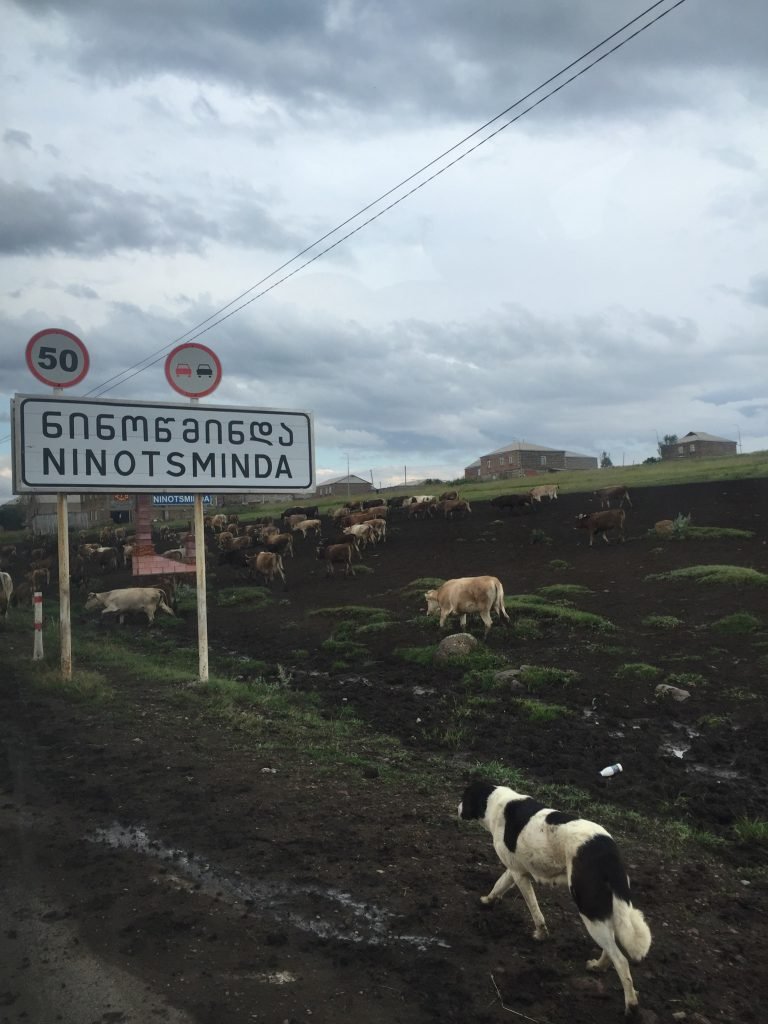
When Georgia declared independence following the collapse of the Soviet Union, national discrimination against the Armenians in Javakhk and the rest of the Republic of increased severely. In the 1990’s, under the presidency of Zviad Gamsakhurdia, Armenians were encouraged to take Georgian surname and were promoted only when they did so. Densely populated Armenian localities in Akhalkalakh and other areas in Javakhk became considered the “21-kilometer zone,” which meant that privatization of lands and their purchase became banned. In order to break the homogeneity of Javakhk’s ethnic makeup, the heavily Armenian populated districts consisting of Akhalkalak, Ninotsminda, Aspindza, and Akhaltskha were united into a single administrative province with its center in Akhalkalak city. Ninotsminda and Akhalkalak ceased representing independent districts, while the electoral law—which provided for the proposal of the candidacy of Parliament deputies on the bases of party affiliation—placed the Armenians in an unfair position.
In 2000, the Russian military base in Akhalkalak was removed. This removal caused grave concern for the Armenians in Javakhk because they viewed the presence of the Russian military base on their district as a guarantee of their safety. The base also provided a great number of Armenians with employment opportunities.
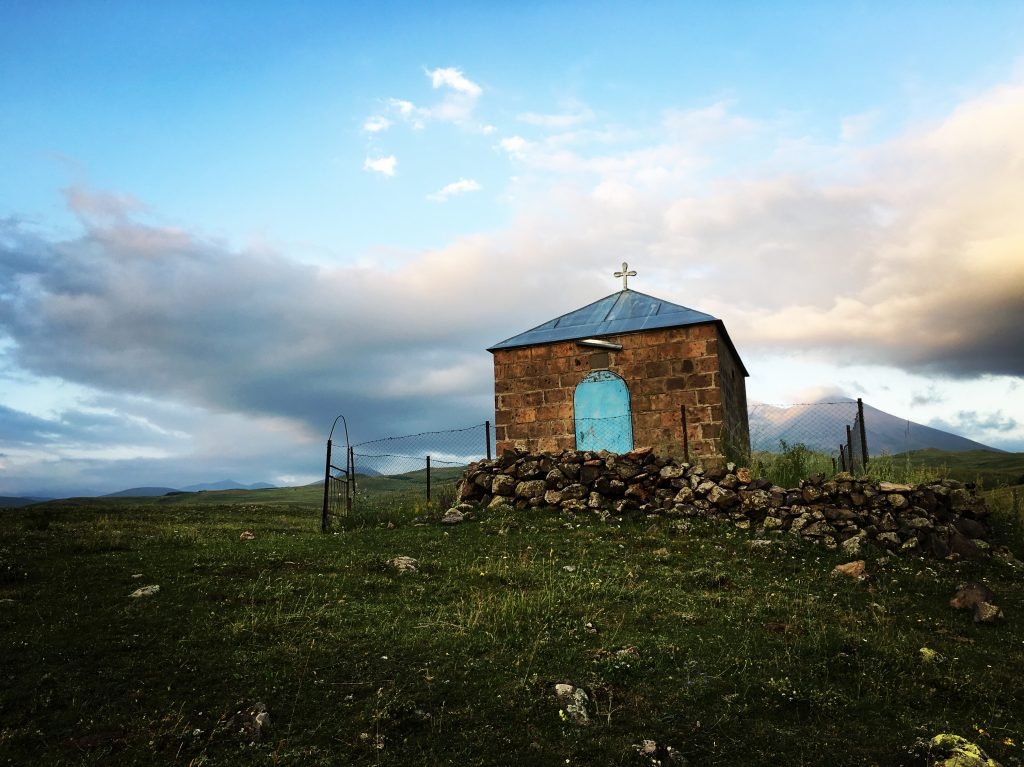
Today, the Armenians of Javakhk live in harsh conditions. Unemployment is rampant, and national discrimination, mistrust towards Georgian authorities, and poor power supply are among some of the main concerns of the Armenian community. These factors have contributed to thousands of people abandoning their native villages for Russia and other countries for better opportunities.
Most Armenian schools in Javakhk have been partially destroyed. It has become a common occurrence for teachers not to receive their salaries for years and pensioners and veterans from the Artsakh War experience severe financial hardships.
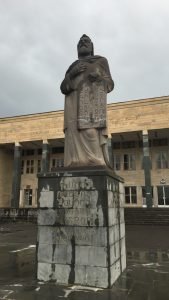
Currently, Javakhk has over 100 villages that are mainly inhabited by Armenians. Districts in Javakhk including Akhaltskha, Ninotsminda, Aspindza, and Tzalka are where a majority of the Armenians reside. Towns like Akhalkalak are about 90 percent Armenian, while places like Akhaltskha are closer to 50 percent.[14] In addition to emigration, these percentages have continued to decrease due to the increase of Meskhetian Turks that have begun to resettle in parts of Javakhk.
Akhaltskha used to be a town with a majority of Armenians, but due to unemployment, Armenians began selling their houses and moving at a time when the Meskhetian Turks began to arrive.[15]
Despite all these hardships, the Armenians of Javakhk continue to preserve the spirit of the Armenian people. At present, there are three Armenian Youth Centers in Javakhk—in Akhaltskha (founded in 2006), Akhalkalak (founded in 2007), and Ninotsminda, which was established in the last couple of years. These cultural youth centers provide spaces where young Armenians gather and learn about their history, culture, and language.[16]
Currently, what is referred to as Historical Javakhk, with its two districts, is the most homogeneous territory outside the borders of the Republic of Armenia and the Republic of Nagorno-Karabagh. Yet today, there are only few initiatives being implemented. One of these programs is the Javakhk Fund Program, which was founded by the Armenian Relief Society (ARS) in 2001. The Javakhk Fund Program was established as a response to the troubling living conditions in Javakhk. The Javakhk Fund helps establish programs focusing on youth, health care, education, and the Armenian culture. The Fund also helps maintain and repair the youth centers in Javakhk throughout the year.[17]
Another, which was also established by the ARS, is Camp Javakhk. Camp Javakhk is a summer day camp for the youth of the Armenian villages in Javakhk organized by Armenian youth from the United States.[18] The program, founded in 2012, is free of charge to the children of Javakhk and takes place in Akhalkalak, Ninotsminda, Akhaltskha, and Dzalka.
The Armenians of Javakhk have experienced a similar history to Artsakh and the modern day Republic of Armenia. Figures like the great minstrel Jivani, writer Derenik Demirchian, poet Vahan Terian, and Defense Minister of the First Republic Ruben Ter-Minassian are all prominent individuals who originated from Javakhk. These individuals overcame many and succeeded in establishing a legacy for generations to come.

Unfortunately, the challenges of the past have guided the narrative of the present day conditions of Javakhk. Discrimination continues to exist; Armenians continue to lack proper representation within government; the Armenian community is slowly decreasing and people are leaving every day. Though these challenges are not new, they must be properly understood and evaluated.
Although Artsakh, Armenia, and the Diaspora all remain important aspects of our history and present day, Javakhk has, unfortunately been overlooked and rarely spoken about. The history and the conditions of Javakhk must be incorporated into our modern day dialogue concerning the issues of the global Armenian nation.
Javakhk, too, is part of our homeland and must be dealt with in that manner. Yes, there are many challenges there given the current circumstances, but proper education on Javakhk’s history and an understanding of its current issues can become the first steps in finding solutions to its many problems.
Notes
[1] Ashot Melkonyan, Javakhk in the 19th Century and the 1st Quarter of the 20th Century, trans. Gayane Movsissian (Yerevan, National Academy of Sciences of the Republic of Armenia, 2007), p. 36.
[2] Melkonyan, p. 35.
[3] Ibid, p. 68.
[4] Ibid, pp. 68-69.
[5] Ibid, p. 68.
[6] Ibid, p. 69.
[7] Ibid, p. 109.
[8] Ibid, p. 113.
[9] Ibid, p. 105.
[10] Ibid, p. 150.
[11] Ibid, pp. 176-177.
[12] The Treaty of Kars. (Turkey, Socialist Soviet Republic of Armenia, Azerbaijan Socialist Soviet Republic, Socialist Soviet Republic of Georgia), Oct. 23, 1921. http://groong.usc.edu/treaties/kars.html
[13] Melkonyan, p. 233.
[14] Melkonyan, p. 235.
[15] Conversation with Akhaltskha resident, Aug. 5, 2017.
[16] “ARS Javakhk Fund”, Armenian Relief Society, http://www.arswestusa.org/index.php/programs/javakhk, (January 16, 2017)
[17] “ARS Javakhk Fund”, Armenian Relief Society, http://www.arswestusa.org/index.php/programs/javakhk, (January 16, 2017)
[18] “Camp Javakhk”, Armenian Youth Federation, http://ayf.org/programs/camp-javakhk/ (January 16, 2017)


Great article, I love that you brought attention to this issue.
How can we help? I’m ready to contribute. I’d love to see a follow up article about the different ways we can be proactive in helping them.
Hi Ari,
Please contact me if you are interested in Helping the Armenians of Javakhk.
Will there it ever come to war for Javakhk like for Artsakh? Conditions in the former aren’t as severe as the latter 30 years ago, but the Georgians are becoming more and more anti-Armenian with every generation and it might come to be another Artsakh some day.
Hi Anon, Please contact me if you are interested in Helping the Armenians of Javakhk.